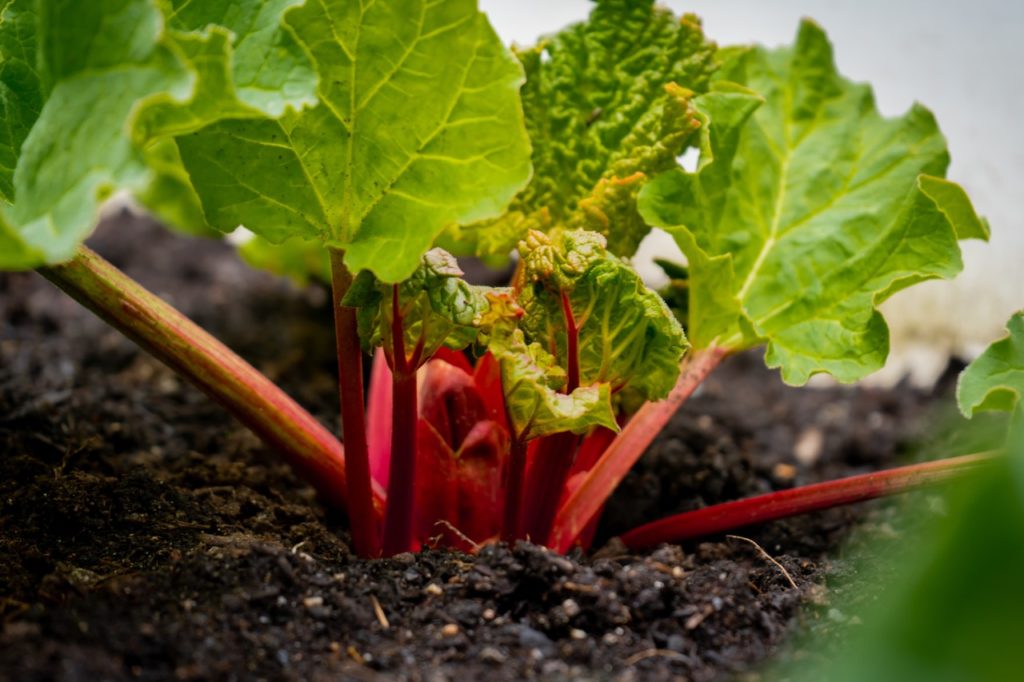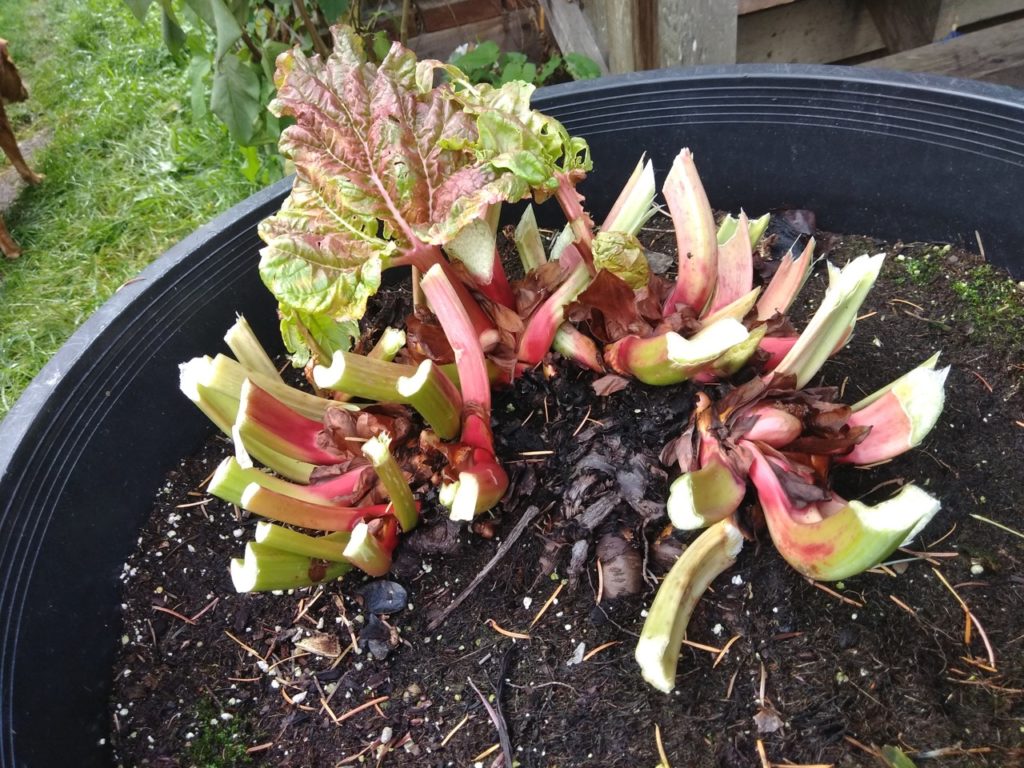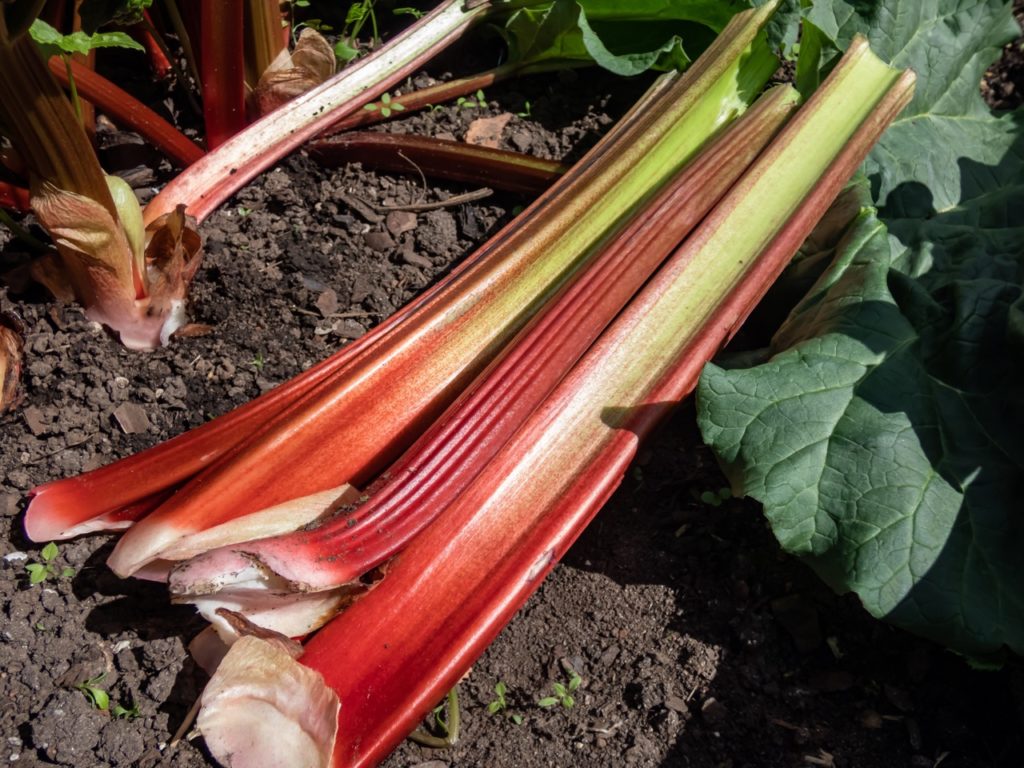Thin Stalks On Your Rhubarb? Your Plant Might Need Dividing Or Fertilising

PERENNIALS > RHUBARB > THIN-STALKS

Ed is a horticultural therapist, professional gardener and writer. Ed has a BSc in Occupational Therapy from Coventry University and a Diploma in Social and Therapeutic Horticulture (DipSTH) via Thive, the RHS and Pershore College. Ed runs a community kitchen garden in West Sussex, where he leads horticultural therapy sessions.
Reviewed By DAN ORI

Dan has over 27 years’ under his belt caring for plants and gardens. Working as a Horticultural Instructor and Consultant, he draws on a diverse range of experience that includes working as a Head Gardener, Tree Surgeon, Garden Centre Trouble Shooter, and writer of academic papers. Dan has a Level 3 Diploma in Horticulture and is currently a candidate for the RHS’s most prestigious award – The Master of Horticulture.
IN THIS GUIDE
Rhubarb is a perennial vegetable that is widely grown for its sweet and vibrant stems for culinary purposes.
Part of the Polygonaceae family, rhubarb is thought to originate from Siberia and China, which is why it can sometimes struggle when grown in our very different climates.1Rhubarb (Rheum species): the role of Edinburgh in its cultivation and development. (2017). Retrieved March 23, 2023, from https://www.rcpe.ac.uk/sites/default/files/jrcpe_47_1_lee.pdf
One of the most common issues gardeners can experience when growing rhubarb is the production of thin, rather than thick stalks, which can be caused by a number of factors:
- A lack of nutrients from the soil.
- If the plant is young or immature.
- Older plants that need to be divided.
- From being harvested incorrectly.
- The stems flowering and going to stem.
We explain each of these reasons with solutions down below.
1) A Lack Of Nutrients
Rhubarb plants are hungry feeders, so if they are not given the correct nutrients they may fail to thrive – and ultimately produce thin stalks.

In autumn or early spring, a general-purpose fertiliser or mulch of well-rotted manure or organic matter can be applied thickly around the crown of the plant, which will give it a boost for the growing season ahead.
Rhubarb prefers moist, but free-draining soil and will struggle if grown in compacted soil prone to waterlogging.
2) The Plant Is Immature
Newly planted rhubarb may produce weak and thin growth early on and should not be harvested until they are suitably established and able to handle being picked from.
To encourage a strong and vigorous plant for many years to come, it is advisable to leave new plants or divisions to settle and bulk up for at least 2 years before taking a harvest.
3) It Needs Dividing
Rhubarb plants are generally tough and can live in excess of 10 years.

However, over time they may become congested and produce weak stems, which is an indication that they should be divided.
It is generally recommended that rhubarb plants are divided every 4-5 years to replace older specimens and maintain plant health.
4) Harvesting Incorrectly
When rhubarb stalks are harvested can also have a bearing on the stem thickness and size, as over-harvesting can weaken the plant and subsequent crop.
Harvesting stems from established plants can generally be performed from early spring until early summer.

Although it might be tempting, cropping after June should be avoided to encourage a healthy harvest in the following years.
5) Flowering & Going To Seed
Although unusual, rhubarb plants can produce flowering stalks during the summer months which need to be swiftly removed.
These flowering stems, if given time, will go to seed and use up the plant’s precious energy, causing it to weaken and potentially produce a poor future harvest.
To remove the flowers, simply cut the flowering stems at the base with a clean and sharp knife.
References
- 1Rhubarb (Rheum species): the role of Edinburgh in its cultivation and development. (2017). Retrieved March 23, 2023, from https://www.rcpe.ac.uk/sites/default/files/jrcpe_47_1_lee.pdf
